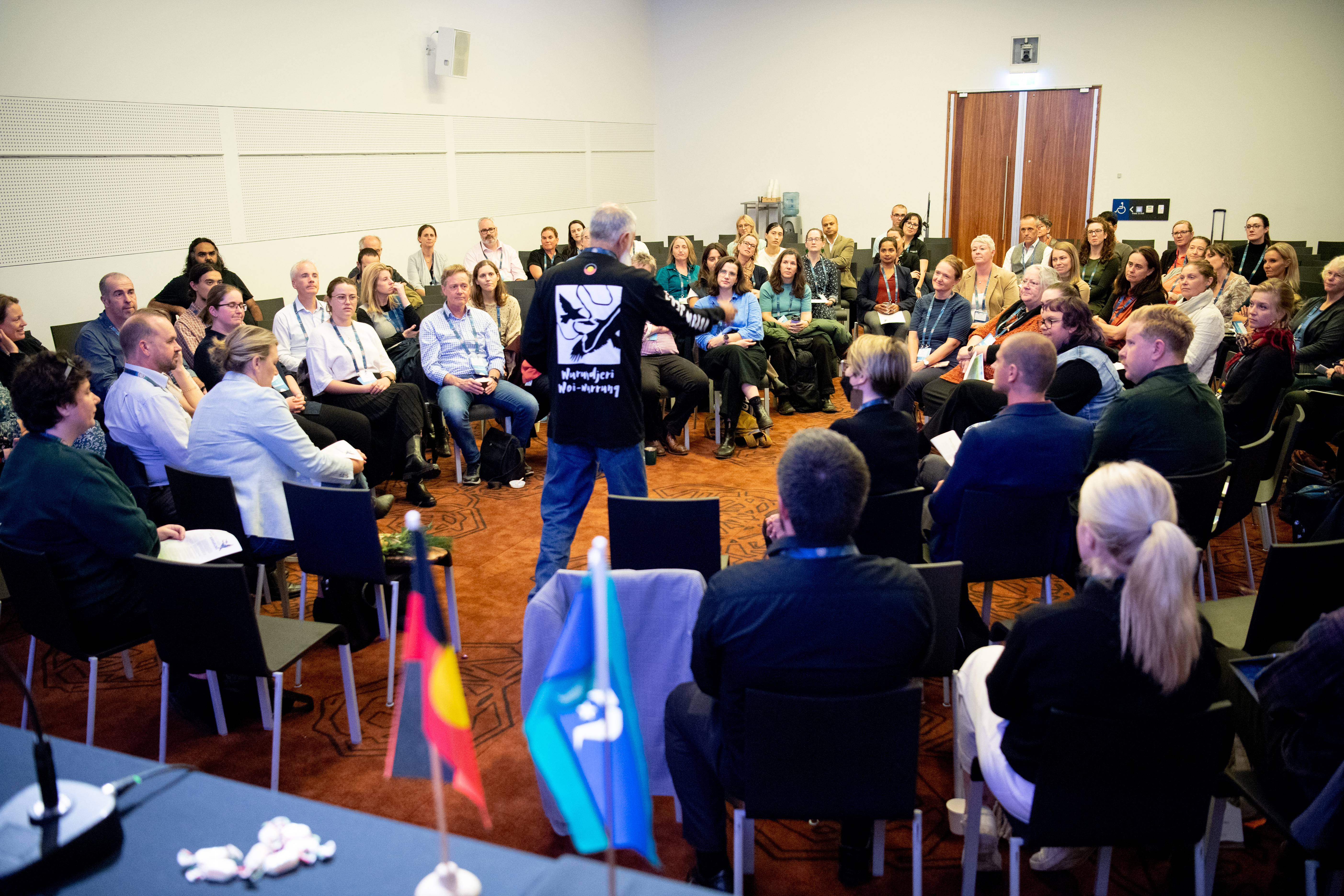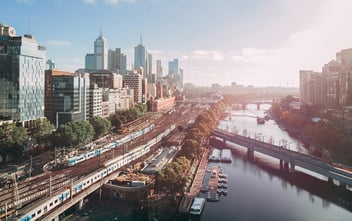Water is Life: a roadmap for water justice in Victoria

As water utilities, councils and governments partner with Traditional Owners for water justice, one recent Victorian roadmap sets out a pathway to ensure the right approach is taken.
On day three of Ozwater’24, a yarning circle was facilitated by Melbourne Water to explore and discuss Water is Life: Traditional Owner Access to Water Roadmap, a plan that sets out the Victorian government’s commitments to increase decision-making for Traditional Owners in the management of water landscapes and increasing Traditional Owner access to water.
Founded in the Victorian government’s recognition of Traditional Owner sovereignty, self-determination, and the need for a restorative justice approach to the way water is managed, development of the roadmap was led by Traditional Owners from across Victoria over 2021 and 2022, and builds on many decades of advocacy.
Speakers included Birrarung Council members Wurundjeri Elder Uncle Andrew Gardiner and Erin O’Donnell from Melbourne University, water officers from Wadawurrung and Djaara, along with staff from Melbourne Water and DEECA.
Melbourne Water Traditional Owner Relationship Manager Rhys Collins introduced the speakers, who had all gathered to generously share their knowledge about the long development of the roadmap.
“My family are Worimi people from New South Wales. I have lived in Victoria for about 20 years and have had the pleasure of working with Traditional Owners groups around the Melbourne area,” he said.
“Engagement is really important in positioning how we talk about water, land and Country. The projects discussed today didn’t start last week. There has been a long period of activity that has led up to this point in time.
“Victoria has a system that is getting better. Every time a new strategy comes out, it is done better. The process is more informed and with longer participation of Traditional Owner communities. The latest release, Water is Life, is a great example of Traditional Owners being involved throughout the discussion period.”
Pathway to change
Introducing the roadmap to the yarning circle, DEECA Environmental Policy and Community Partnerships’ Lisa Lowe said the roadmap represents a big change for the water sector.
“Water is Life was published in 2022. Its release was a big milestone in and of itself. It is a culmination of years of work between government and Traditional Owners, and a result of decades of advocacy work, too,” she said.
“Traditional Owners have cared for waterways for a really, really long time. But since colonisation, they’ve been larged excluded from the way we manage water. The volume of entitlements held by Traditional Owners is about 0.2%.
“This really has to change. We have to do something to turn around the historic and ongoing injustice. Water is Life sets out a roadmap of the really big change we need to make, and how we need to turn away from what we do now as business as usual.”
Lowe said the roadmap is divided into two parts: the first part sets out the government’s commitments, the second includes no less than 27 nation statements from Traditional Owners groups around Victoria.
“The government’s commitments are set out under three main themes. The first is that Traditional Owners have a greater role in deciding how water is managed on their Country. The second is that Traditional Owners have greater access to water and hold more water entitlements,” she said.
“And the third is that we, as the water sector and government, have to be held accountable to Traditional Owners in terms of delivering on these commitments.”
Lowe said the roadmap is designed to be improved as short, medium and long-term actions are implemented, to ensure the process becomes stronger and more informed as it moves forward.
“We really want to implement this strategy in a way that supports long-term, systematic change across the water sector. One of the ways we do that is to think about learning by doing. Water is Life is designed so that as we learn from implementing short-term actions,” she said.
“When we do pilot projects, we learn from those. Those learnings inform how we approach medium term actions and how we make those bigger changes. We know we will need to adapt as we learn so that we can continue to do things better.”
Roadmap in action
Sharing one particular journey under Water is LIfe, Claire Mennen and Jayden Woolley from Wadawurrung Traditional Owner Aboriginal Corporation discussed a recent trial to return water on Wadawurrung Country.
“Last summer we partnered with local water authorities and stakeholders to trial water releases on Wadawurrung Country. Throughout February this year, 200ML of water from the Lal Lal Reservoir was returned to the west branch of the Moorabool Yulluk,” Mennen said.
“A total of 48ML of water was released from the Bostock Reservoir to the east branch of the Moorabool Yulluck reconnecting the river that surrounds the Wadawurrung owned property. Due to the location of the existing outlet, this entire river section misses out on environmental flows.
“A temporary pump and pipe was installed to pump water around the reservoir wall into the reach of river that hasn't received any upstream flow since the construction of the dam wall in the 1950s.
“Over March, 42ML of water was pumped from the upper Stoney Creek Reservoir into the existing dugout channel to fill the wetland. This trial was part of a Wadawurrung led project that aims to build our knowledge of the wetland, its values and help us understand its watering needs.”
Woolley acknowledged Greg Robinson, a Wadawurrung man, for his significant contribution to the projects, as well as all Wadawurrung people who guided the trial.
“This is a self-determined Wadawurrung project. It came from Wadawurrung, Wadawurrung led everything to make it happen. But it couldn’t have happened without the strong support we had from everyone. We have had lots of partners to make it work,” he said.
“Without the work our partners did behind the scenes, we wouldn’t have been able to do this. It’s an important part of the learnings, which is around how water organisations can work alongside Traditional Owners organisations to make this all happen.
“We captured what has been happening on Country with Wadawurrung community Elders and we are making an effort to share the outcomes with the general community, the Wadawurrung community and agencies and stakeholders.”
Mennen said the outcomes of the trial have been very encouraging.
“We achieved some really good outcomes on Country, including reconnecting the lost part of the river, improvements in the health of riparian vegetation and water quality, and even hearing the sound and seeing flow of water in the river that had lost its natural identity,” she said.



